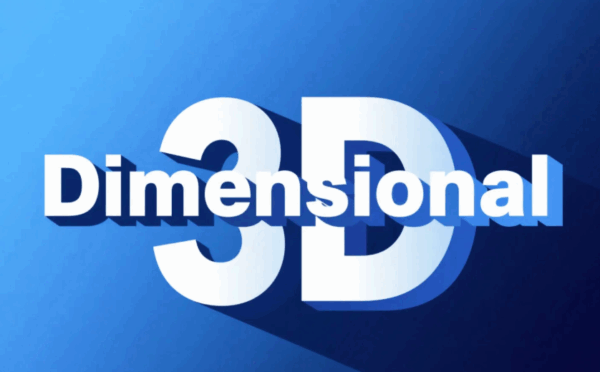With the advancement of film technology, the dimensional presentation of movies has evolved far beyond the basic 2D format. From stereoscopic 3D to immersive VR experiences and the emerging glasses free 3d solutions, moviegoers today enjoy a wide spectrum of sensory engagement. This article explores the most common movie dimension types available on the market, including their technical characteristics, viewing equipment requirements, and the sensory depth they deliver. Particularly, we will discuss how glasses free 3d is transforming the viewing experience.
Understanding Movie Dimensional Types: From 2D to Glasses Free 3D and Beyond
Dimensional formats in cinema determine how visual information is delivered and perceived by the audience. Below is a comprehensive overview of the major types currently in use.
2D and 3D: The Basics
- 2D Movies: Traditional flat-screen visuals, representing only height and width. It remains the most widespread and accessible format globally.
- 3D Movies: Add a sense of depth by creating visual disparity between the left and right eye using stereoscopic technology. Requires 3D glasses to view.
Glasses Free 3D: The Future of Depth Perception
Glasses free 3d technology eliminates the need for specialized eyewear. Utilizing autostereoscopic displays, lenticular lenses, or parallax barriers, it allows viewers to experience depth directly. As of 2025, over 60 theaters in Asia and 15 in Europe have begun testing glasses free 3d screens, aiming to improve accessibility and comfort for audiences.
Common Movie Dimension Types
| Type | Name | Features / Description | Typical Locations |
| 2D | Standard Movie | Flat image, no depth | Traditional theaters, home devices |
| 3D | Stereoscopic 3D | Depth via glasses, dual projection | IMAX 3D, RealD cinemas |
| IMAX 2D/3D | Large Format | Higher resolution, wider screen, better sound | Premium cinema chains |
| 4D (4DX, MX4D) | Dynamic Experience | Adds seat motion, wind, water, smell | 4D Theaters, premium entertainment zones |
| 5D | Multi-sensory | 4D + interactive effects like mist, vibration | Theme parks, science centers |
| 6D/7D | Interactive Cinema | Includes motion capture or weapon-based interaction | Amusement parks, arcade centers |
| 9D/12D | Marketing Terms | More layers of immersion, often VR-based | VR arcades, immersive installations |
| Glasses Free 3D | Autostereoscopic | No glasses needed, uses advanced screens | Emerging in high-tech cinemas |
Glasses Free 3D and Immersive Formats Are Reshaping Cinema
Benefits of Glasses Free 3D:
- Comfort: No need for external devices like polarized or shutter glasses.
- Accessibility: Easier for children, people with glasses, or those with eye fatigue issues.
- Technology-Driven: Uses eye-tracking and parallax shifting, often with UHD (4K–8K) displays.
- Cost Efficiency (Long-Term): Reduces need for cleaning or replacing 3D glasses in cinemas.
By 2024, the global glasses free 3d market reached an estimated value of $1.3 billion, and it is projected to grow at a CAGR of 14.7% over the next five years. Industry leaders like LG and Leia Inc. are pushing these technologies into consumer devices such as tablets and large cinema displays.

Multi-Dimensional Movies: Beyond Just Visual Depth
Sensory Expansion in 4D to 7D
4D Films introduce motion seats, scents, and wind—triggered at exact moments to enhance the narrative.
5D to 7D integrates user actions, allowing the viewer to become part of the storyline, often with real-time feedback.
These are commonly seen in entertainment parks, interactive science museums, and immersive installations.
A typical 4DX theater includes:
- 20+ environmental effects
- Synchronized motion systems
A 20-minute film can trigger over 500 chair movements and effects in a session.
VR & AR: Redefining What a “Movie” Can Be
Virtual Reality (VR) films let viewers control the point of view, enabling 360° cinematic storytelling. Augmented Reality (AR) overlays cinematic elements on the real world, engaging users via mobile screens or smart glasses.
For example, the 2023 short film “The Line” was an award-winning VR movie where viewers could walk around the set.
While these are not conventional theatrical experiences, they demonstrate how glasses free 3d and mixed reality are leading toward a future where cinema becomes spatial, interactive, and deeply personal.
Challenges and Considerations
Despite the innovation, there are several limitations:
- Glasses Free 3D requires viewers to remain in specific zones for best effect (limited viewing angles).
- High Production Cost: Creating content for 4D/5D/VR is resource-intensive.
- Audience Adaptation: Some viewers still experience motion sickness, particularly in VR or intense 4D settings.
- Content Compatibility: Not all films are suitable for high-dimensional adaptation—dialogue-heavy dramas often remain in 2D or IMAX 2D.
Final Thoughts
Filmmakers today must match the narrative intent with the appropriate dimensional technology. A high-octane action film may benefit from 4D or glasses free 3d, while an intimate documentary might feel more authentic in 2D or IMAX.
As glasses free 3d continues to improve, we may see a shift away from conventional 3D glasses entirely. With companies investing in AI-driven eye-tracking and multi-viewpoint rendering, the next generation of moviegoers might experience cinema in ways never imagined—fully immersed, effortlessly engaged, and glasses free.





